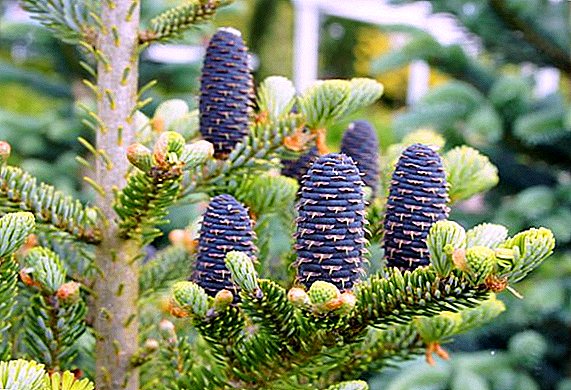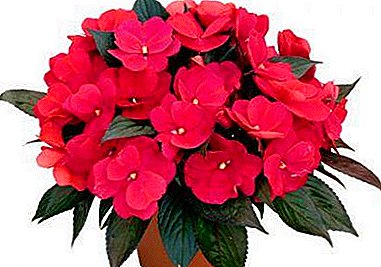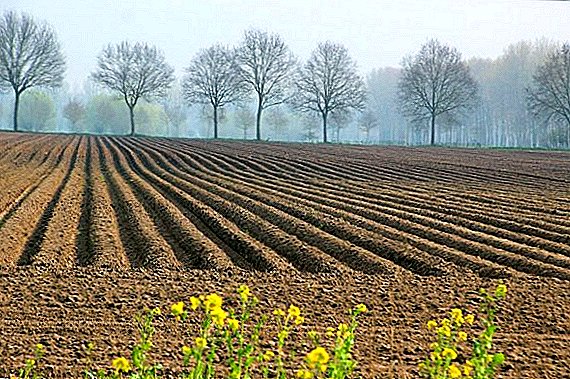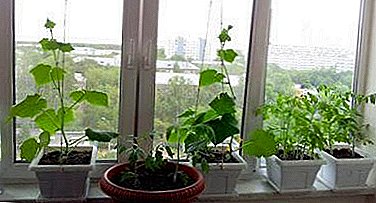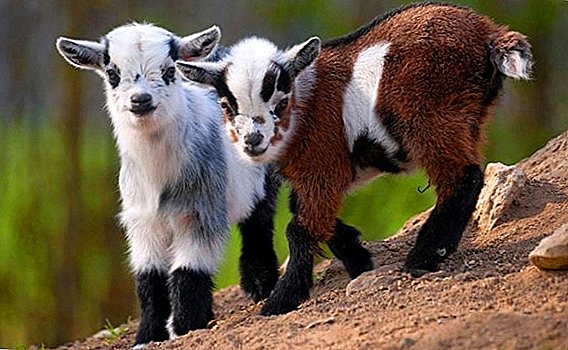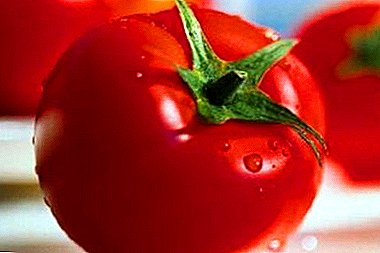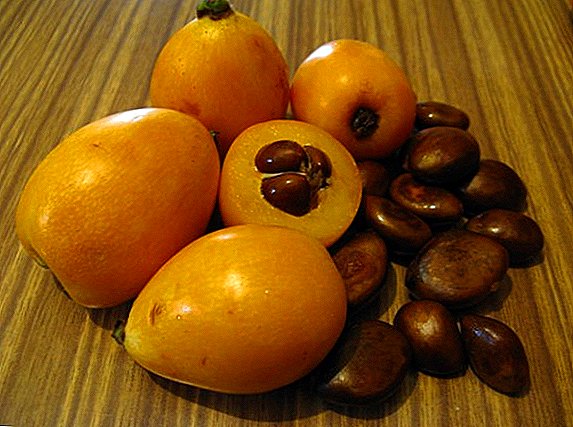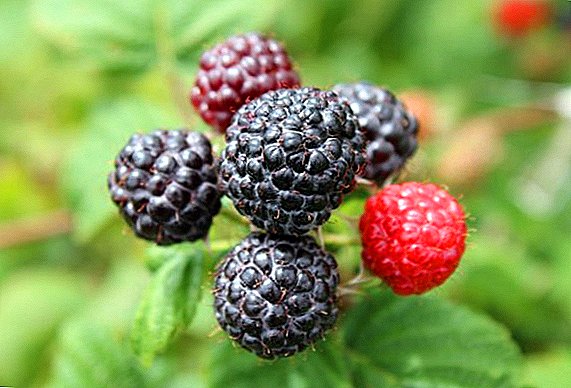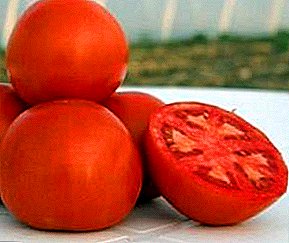
Among the early-generation hybrids of the first generation are many very interesting options for greenhouses and open ground. A striking example is Lady Shedi. A low shrub is distinguished by good yields, with proper formation, the quantity and quality of the fruit is significantly improved.
In addition, these tomatoes are very good in taste, not afraid of shipping and well stored. And also resistant to many diseases of the nightshade.
In this article you will be able to get acquainted with the full description of this variety, learn all about the features of cultivation and other subtleties of agricultural engineering, find useful information about the characteristics.
Tomato "Lady Shedi" F1: variety description
| Grade name | Lady shedi |
| general description | Early ripe, determinant hybrid of the Dutch selection for cultivation in greenhouses and an open ground. |
| Originator | Holland |
| Ripening | 105-115 days |
| The form | Fruits are medium sized, fleshy, rounded flat and multichamber. |
| Colour | Red |
| Average tomato mass | 120-200 grams |
| Application | Tomatoes are consumed fresh, used for stuffing, cooking side dishes, soups, sauces, juices and mashed potatoes. |
| Yield varieties | 7.5 kg from a bush |
| Features of growing | Agrotechnika standard |
| Disease resistance | The hybrid is well against major diseases, but preventive measures do not interfere |
 The grade of the Dutch selection, is intended for cultivation in an open ground, in greenhouses from polycarbonate or glass, in hotbeds, under a film.
The grade of the Dutch selection, is intended for cultivation in an open ground, in greenhouses from polycarbonate or glass, in hotbeds, under a film.
Collected fruits are well stored, transfer transportation without any problems. Ripened tomatoes in the technical ripeness phase ripen quickly at room temperature.
Lady Shedi is an early F1 hybrid. Bush determinant, height up to 70 cm. About indeterminantny grades read here. Forms clusters of 3-4 fruits. For better yield, it is recommended to form a plant in 2 stalks, leaving no more than 6 brushes. Productivity is good, from 1 square. m planting can collect 7.5 kg of tomatoes.
Yield varieties can be compared with others:
| Grade name | Yield |
| Lady shedi | 7.5 kg per plant |
| American ribbed | 5.5 kg per plant |
| Sweet bunch | 2.5-3.5 kg from a bush |
| Buyan | 9 kg from a bush |
| Doll | 8-9 kg per square meter |
| Andromeda | 12-55 kg per square meter |
| Lady shedi | 7.5 kg per square meter |
| Banana red | 3 kg from a bush |
| Golden anniversary | 15-20 kg per square meter |
| Rose of Wind | 7 kg per square meter |
Specifications
The main advantages of this variety:
- tasty and juicy fruits with high sugar content;
- resistance to major diseases;
- heat resistance, immunity to weather variations;
- plants tolerate a slight drought.
Deficiencies in the variety is not noticed.
A special feature is the need to form a bush with the help of a pinch. When grown in 2 stalks and limiting the number of brushes, the yield increases significantly, the fruits are larger and more even. Tying is usually not required.
Characteristics of the fruits of tomato varieties "Shedi Lady" F1:
- Fruits are medium size, fleshy, rounded flat, rich red, multi-chamber.
- Taste is pleasant, sweetish, not watery.
- Mass of tomatoes from 120 to 200 g
- The dense glossy peel protects fruits from cracking.
- The flesh is juicy, sugary.
Compare the weight of the fruit with other varieties can be in the table:
| Grade name | Fruit weight |
| Lady shedi | 120-200 grams |
| Verlioka | 80-100 grams |
| Fatima | 300-400 grams |
| Yamal | 110-115 grams |
| Red Arrow | 70-130 grams |
| Crystal | 30-140 grams |
| Raspberry jingle | 150 grams |
| Cranberries in sugar | 15 grams |
| Valentine | 80-90 grams |
| Samara | 85-100 grams |
Variety refers to the salad. Tomatoes are consumed fresh, used for stuffing, cooking side dishes, soups, sauces, juices and mashed potatoes.
A photo
We offer you to get acquainted with the tomato varieties "Lady Shedi" in the photo:



Features of growing
 Seeds for seedlings are sown in early March. A light and nutritious soil from a mixture of turf or garden land with rotted humus is used.
Seeds for seedlings are sown in early March. A light and nutritious soil from a mixture of turf or garden land with rotted humus is used.
Seeds before planting are soaked in a growth promoter. Treatment with disinfectant solutions is not needed, all procedures are seeds before packing and selling.
Seeds are sown with a depth of 2 cm, sprinkled with peat on top and sprayed with warm water. Landings are covered with foil and placed in heat. You can use special mini-greenhouses. After the emergence of shoots, the container is exposed to a bright light: the window sill of the window facing south, or under electric lamps. From time to time the container should be rotated, ensuring uniform development of seedlings.
Sampling into separate pots is carried out after the unfolding of 2 true leaves. After picking, the young plants are fed with a liquid complex fertilizer. Planting for permanent residence is as follows: seedlings are planted in film greenhouses in early May. The plants are moved to the beds closer to the end of the month and covered with foil in the first days.
It is important that the ground is fully warmed up! Before planting the soil is carefully loosened. In each well is made of 1 tbsp. spoon complex fertilizer or wood ash. How to prepare a spring in the greenhouse soil read here. Watering is moderate, only warm water is used. Cold can cause shock and slow growth in the bushes.
It is possible to use nitrogen-containing fertilizers before flowering, after the formation of ovaries, it is recommended to focus on potash and phosphorus fertilizers. Mineral supplements can be alternated with organic ones, but you shouldn’t be too carried away with organic matter. Mullear and bird droppings contribute to the accumulation of nitrates in fruits.
As fertilizers also use:
- Yeast.
- Iodine.
- Ash.
- Hydrogen peroxide.
- Ammonia.
- Boric acid.
 Read on our website: How to get an excellent crop of tomatoes in the open field? How to grow tomatoes all year round in a winter greenhouse?
Read on our website: How to get an excellent crop of tomatoes in the open field? How to grow tomatoes all year round in a winter greenhouse?How to care for early ripening varieties? What are the most high-yielding and disease resistant tomatoes?
Pests and diseases
The hybrid not bad opposes the main diseases, but preventive measures do not interfere. The soil for the seedlings is calcined in the oven; before planting the adult plants, the soil is shed with a hot solution of potassium permanganate. From late blight help regular spraying with copper preparations. Plant protection with a weak solution of potassium permanganate or phytosporin will help protect the plants from gray, apical and root rot.
Read more about how to protect plants from phytophtoras and whether there are varieties resistant to this disease. How to deal with the most common diseases of tomatoes in greenhouses and what is dangerous are Fusarium, Verticilliasis and Alternaria.
Insecticides help against flying pests, as well as folk remedies: an infusion of onion peel, celandine, yarrow.
Lady Shedi is a promising hybrid suitable for gardeners without capital greenhouses. Drought-resistant and unpretentious tomato feels great in the open field, stably bearing fruit and does not cause unnecessary worries.
In the table below you will find useful links about tomato varieties with different ripening periods:
| Middle late | Medium early | Superearly |
| Volgogradsky 5 95 | Pink Bush F1 | Labrador |
| Krasnobay F1 | Flamingo | Leopold |
| Honey salute | Mystery of nature | Schelkovsky early |
| De Barao Red | New königsberg | President 2 |
| De Barao Orange | King of Giants | Liana pink |
| De barao black | Openwork | Locomotive |
| Miracle of the market | Chio Chio San | Sanka |


